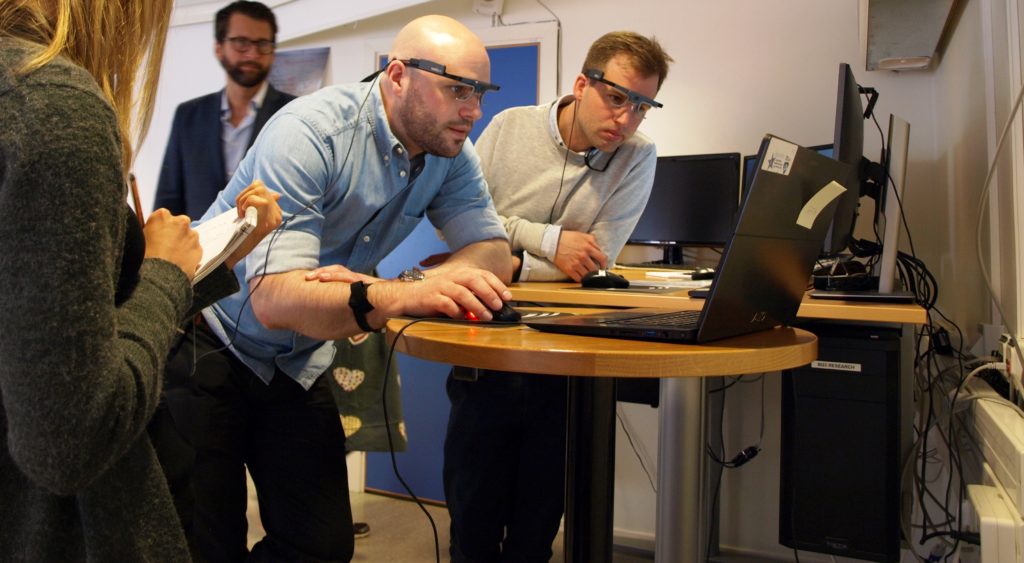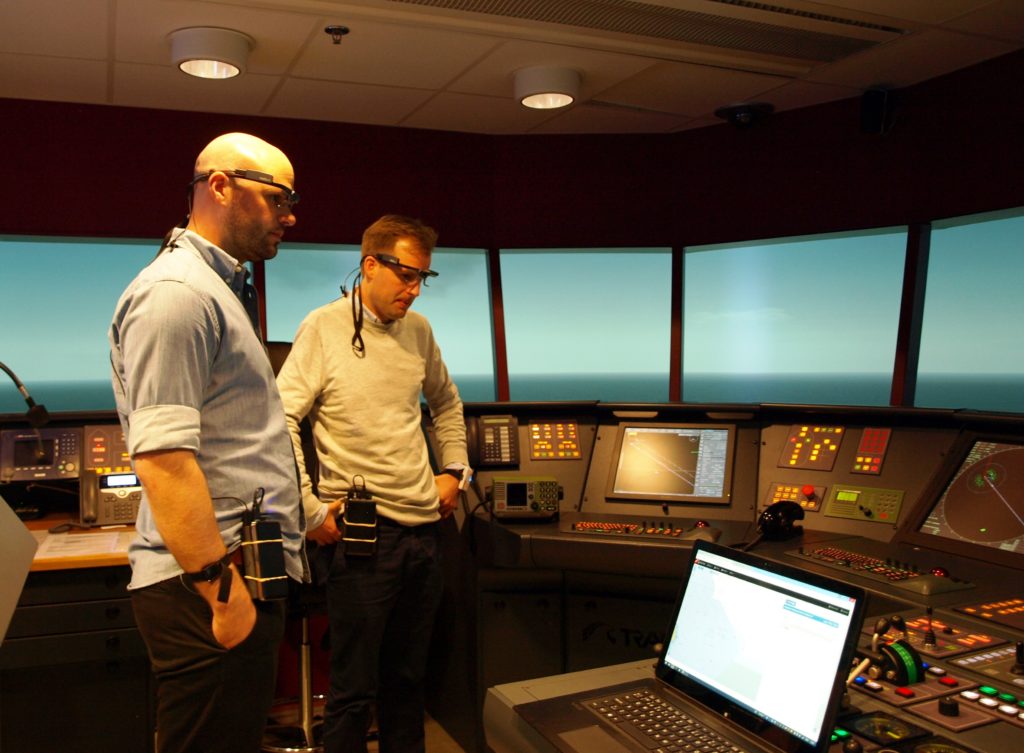European e-Navigation solutions tested for human factors
The EU funded EfficienSea2 project, which aims to implement innovative and smart solutions to increase efficient, safe and sustainable traffic at sea, has finished a full-scale simulation of a wide variety of e-Navigation solutions.
The simulations, which involved 8 navigators and took a total of four days, were conducted at Chalmers University of Technology in Sweden and focused on the human factors in e-Navigation. Multiple services, ranging from a digitalised form of Navigational Warnings to an interactive VTS-reporting system, were tested by the mariners on a full-bridge simulator while wearing eye-trackers and GSR devices to detect emotional changes.
The simulations will ensure that the new services are optimised to guarantee fewer burdens for the navigators when exploiting digital tools for navigation, explains Mads Friis Sørensen, Project Manager for EfficienSea2 and Senior Adviser at the Danish Maritime Authority:
“We have what appear to be endless possibilities with modern technology, but there is a danger of overcomplicating things for the navigator. The solutions we develop must relieve pressure – not add complexity – so navigators can focus on performing their primary duty, which is to sail the ship safely. We ensure this by conducting these simulations focusing on the human factors when using digital tools,” he says.
Human factors testing is an integral part of the EfficienSea2 project and the 32 partners involved all work to develop solutions with an eye towards the impact on the mariners. The project also includes Force Technology and Chalmers University of Technology, both leading in the field of human element and human-machine interfaces.

The mariners were asked to plan their route before entering the simulator. They could use the BalticWeb to assist them.
Solutions available online
On top of developing a wide range of digitalised services, the EfficienSea2 project has built the web-based platform BalticWeb, which was used during the simulation to present the new services to the mariners. They were first asked to plan their route using tools from the BalticWeb and then later had the chance to use the different services when doing the full-bridge simulation.
“BalticWeb is an essential demonstrator for e-Navigation solutions and it reveals the possibilities of the solutions developed in the EfficienSea2 project. It is an ‘easy to use’ map-based platform for navigators, and for the industry it is easy to adapt many of the underlying digital services displayed on BalticWeb so they can be presented on other maritime platforms,” Mads Friis Sørensen explains.
All it takes to exploit the different services developed by EfficienSea2 and presented on BalticWeb is an account in the so-called ‘Maritime Cloud, which is the innovation centrepiece of the EfficienSea2 project. All finished services can be found through the Maritime Cloud in a standardised format, and it will be possible for private developers and authorities to register individual services for mariners to find.
You can read more about the many aspects of EfficienSea2 at the website www.efficiensea2.org.

